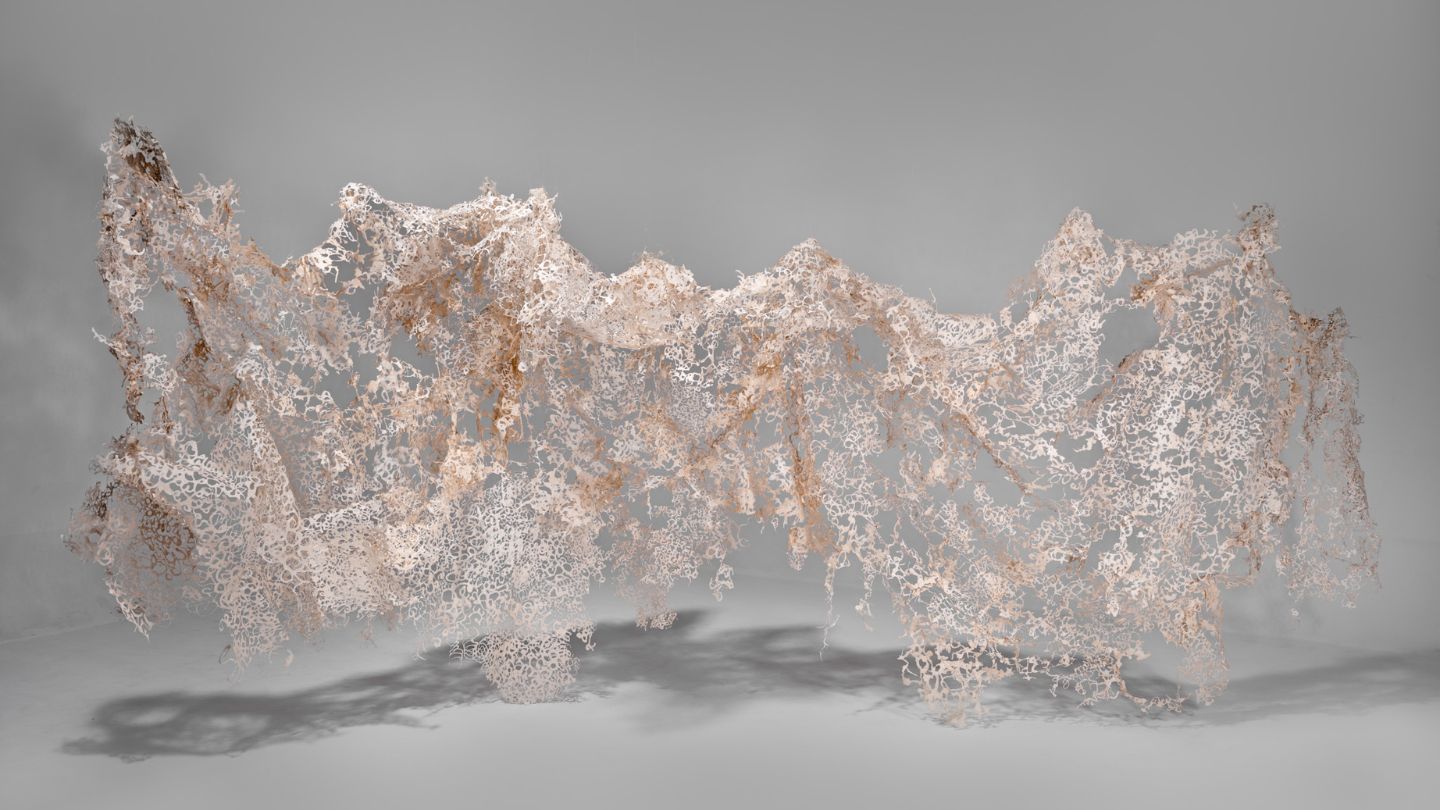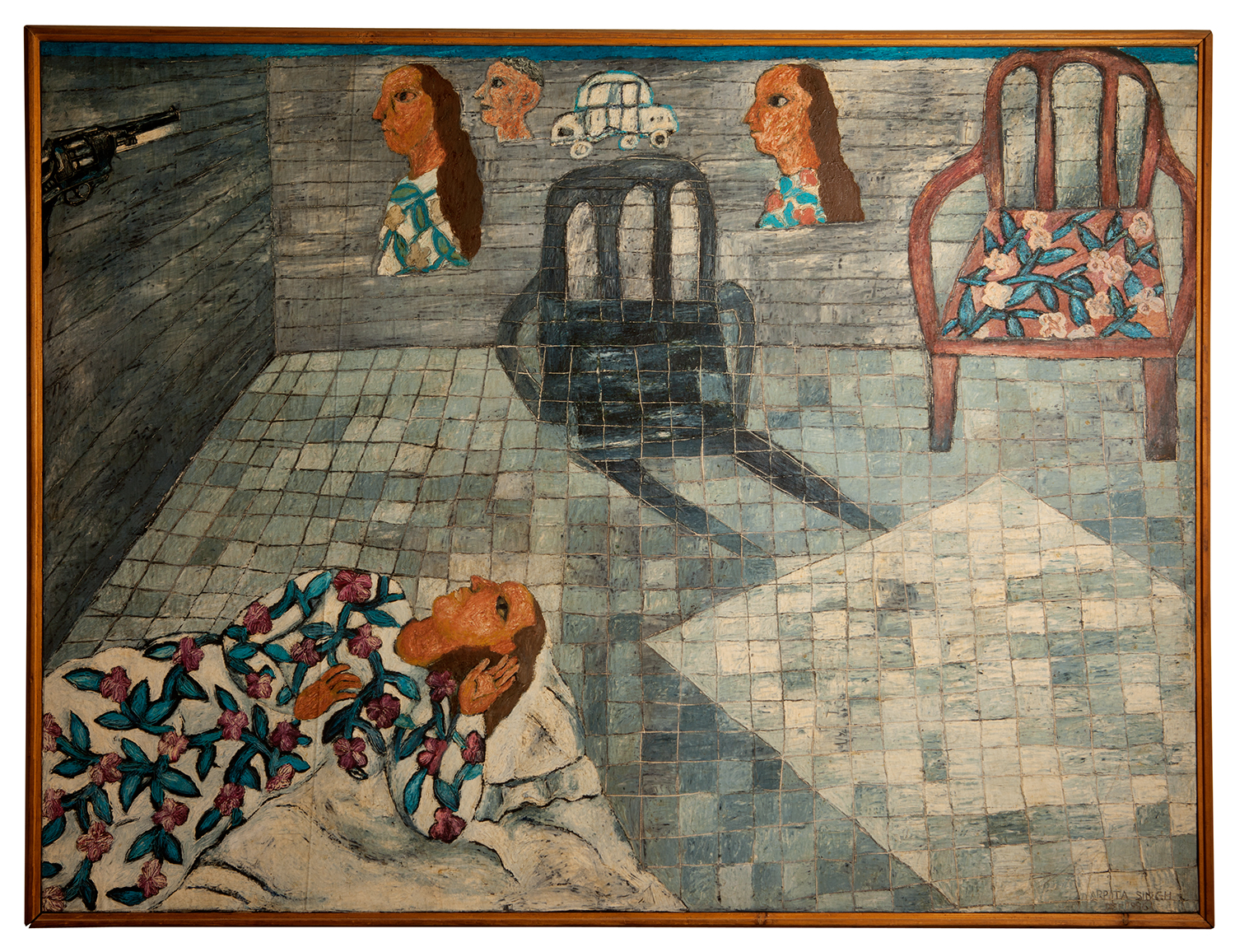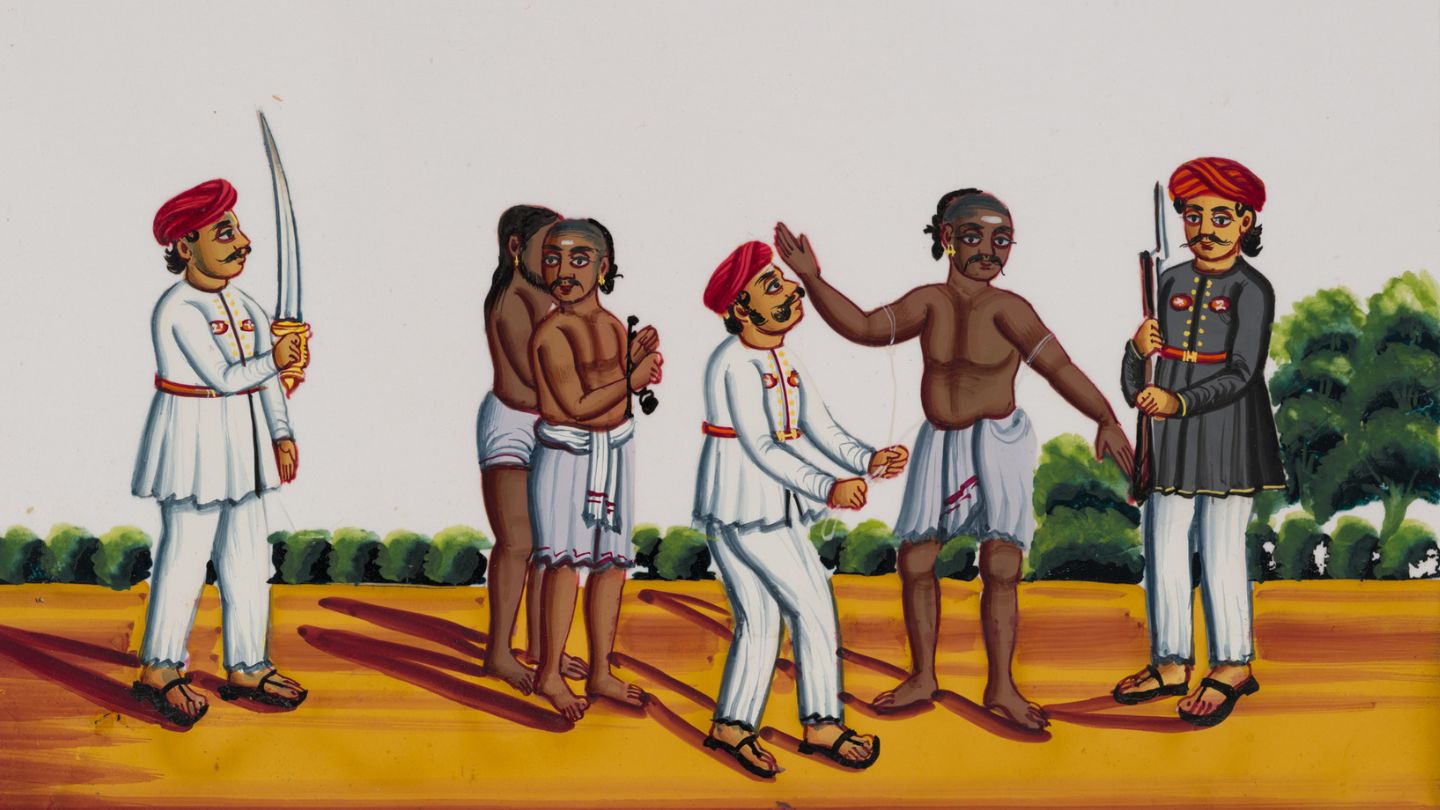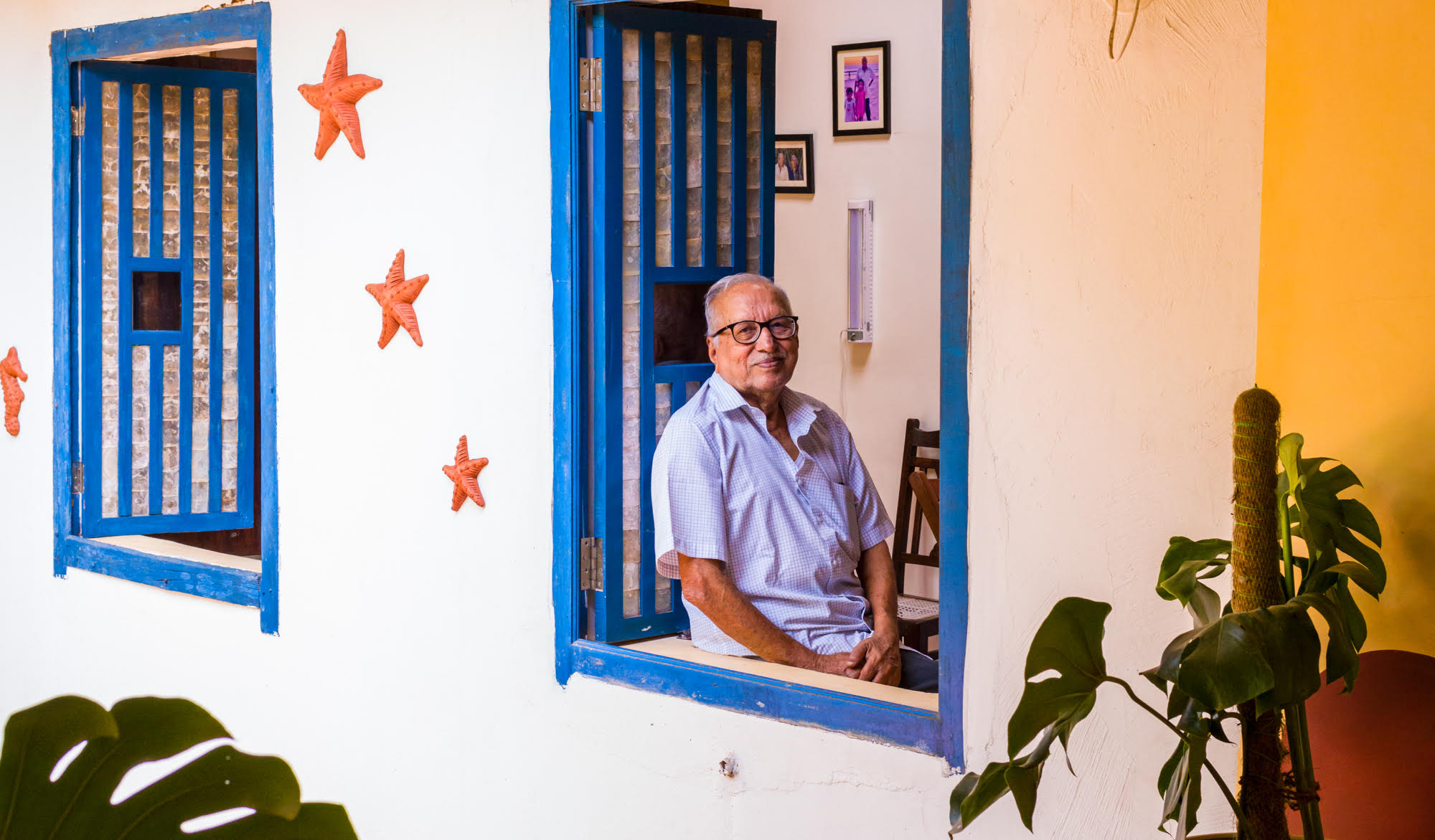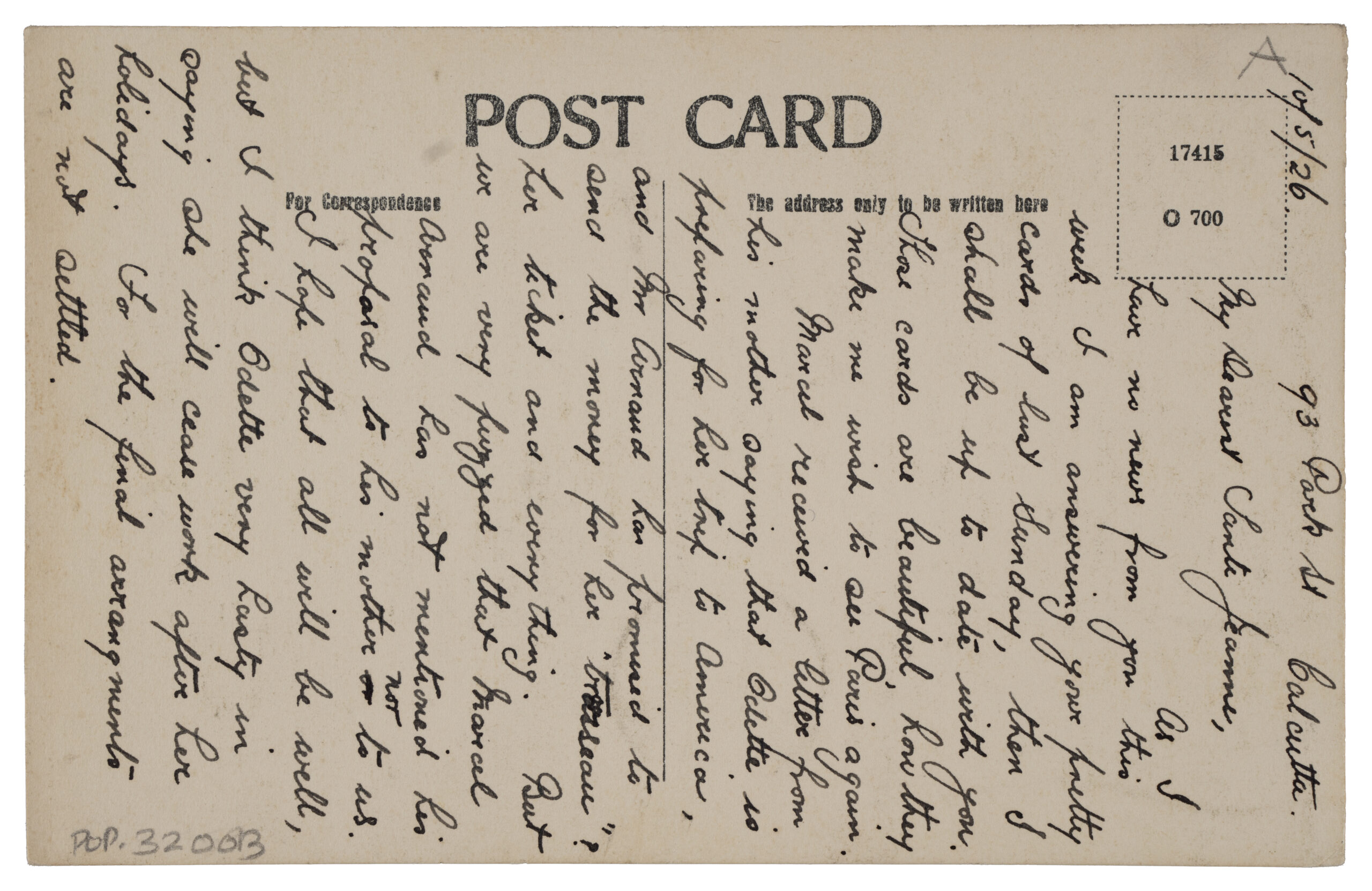Blogs
Creating the Gaze
Aparna Jayakumar
How a makeshift photo studio at a village fair empowered young girls
Maina, with her hands planted on her hips, faces the camera with confidence and abandon. Rampyari’s rehearsed pose and piercing gaze make her appear both intense and vulnerable at the same time. The dreamy, fantastical quality of the images can be attributed to “the broad, even light of a desert sky, filtered through the cloth roof of our tent,”1 as described by Gill.
Gauri Gill, a New Delhi-based artist, has had a longstanding connection with rural Rajasthan where several of her projects are set. In 2003, she was invited to participate in a fair for girls, organised by the non profit organisation Urmul Setu Sansthan in the town of Lunkaransar. Over a thousand adolescent girls from 70 surrounding villages attended the event.
 Maina, Gauri Gill, 2003, Archival Pigment Print, Balika Mela Series, MAP
Maina, Gauri Gill, 2003, Archival Pigment Print, Balika Mela Series, MAP
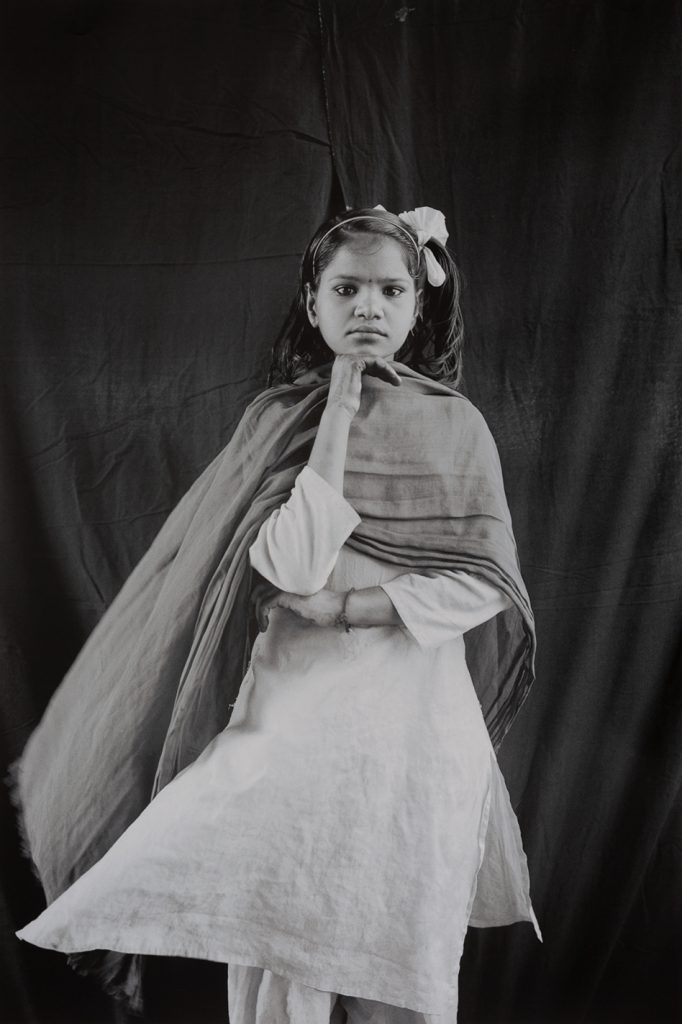 Rampyari, Gauri Gill, 2003, Archival Pigment Print, Balika Mela Series, MAP
Rampyari, Gauri Gill, 2003, Archival Pigment Print, Balika Mela Series, MAP
Amidst the usual fare – food stalls, joyrides, games and festivities, Gill set up a makeshift photo studio in a tent, simple and bare-boned, using locally available materials. What was unique about her studio was that Gill chose to make it a collaborative effort; the girls were encouraged to bring props and design their own portraits together with her.
Gill explains, “The whole scene was co-directed by me and those in the picture, as well as everyone around us: the girls would try out a few ideas, others would throw out suggestions, wisecracks and jokes, we’d all collapse with laughter, I’d yell at everyone to get serious, then suddenly someone would come up with a genius idea.”2 The girls were offered subsidised prints to take away as a memento.
At first, Gill’s high quality silver gelatin images appear formal and static, much in the style of classical Indian studio photography, but on engaging with them, the intimacy Gauri shares with her sitters is revealed. In her diverse practice, Gill has addressed complex and deep-rooted issues such as caste, class, community and gender dynamics. Her eye is subtle, her images delicate but her message is strong.
The act of enlisting the help of these girls, for many of whom this was a first-of-a-kind experience, is the defining premise of the project. Society in rural Rajasthan is known for its patriarchal structure; women are often victims of subjugation, and stories of violence against women are commonplace. “The images do have a feel for the region’s dizzying rates of female infanticide, but also for the corollary: that women just want to be*”, writes Gill. The camera then becomes an important tool for the girls to project their aspirations; in that moment they are empowered and free.
This body of work was made at a time when smartphones and cheap internet were not as ubiquitous as they are today. Gill’s sitters look at her camera with curiosity, awe and respect. It would be interesting to see how the project could evolve if Gill were to revisit the fair today, in the era of narcissistic selfies and self-indulgent Tiktok videos that have irrevocably challenged the role of a portrait photographer in society.
[1] Excerpt from the artist’s website, http://gaurigill.com/works.html
[2] Excerpt from the artist’s interview on Edition Patrick Frey, https://www.editionpatrickfrey.com/en/books/balika-mela-gauri-gill
Aparna Jayakumar is a photographer based out of Bangalore, India. Her work ranges from documentary and editorial photography to commercial shoots for international brands. She is also involved in photography education and community outreach programs.
